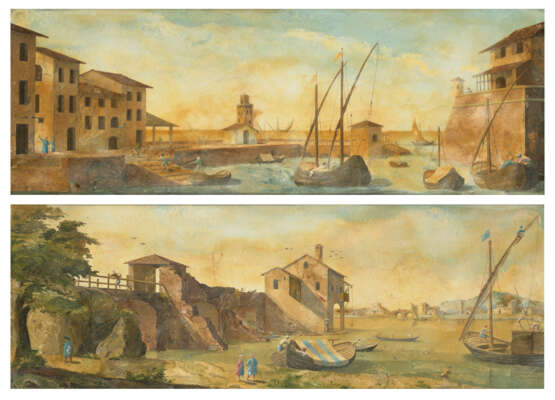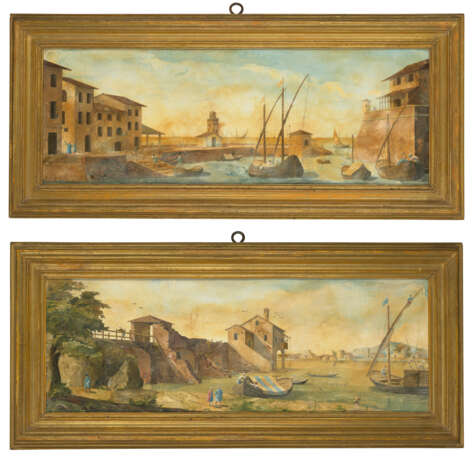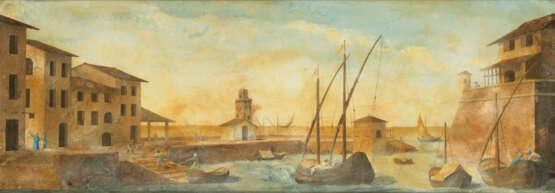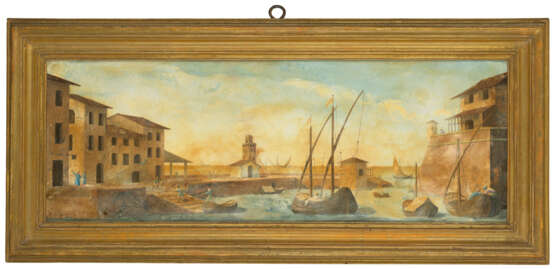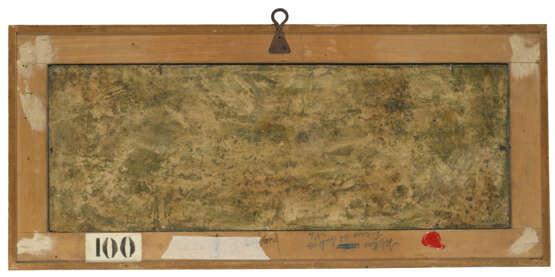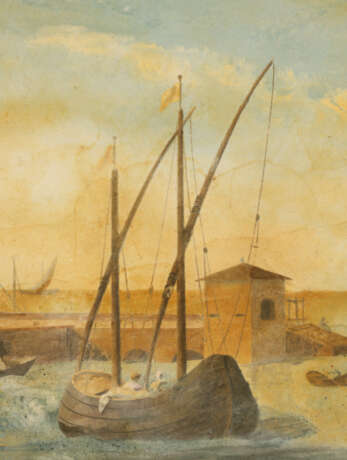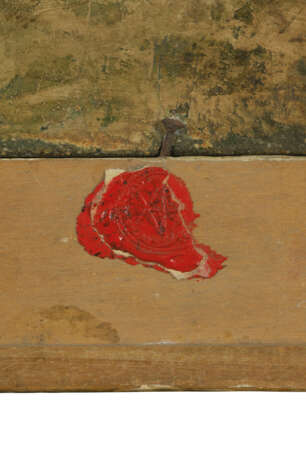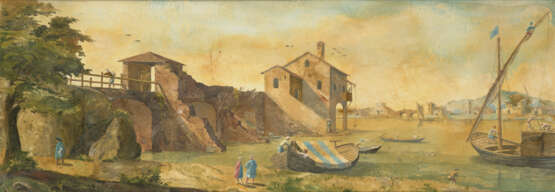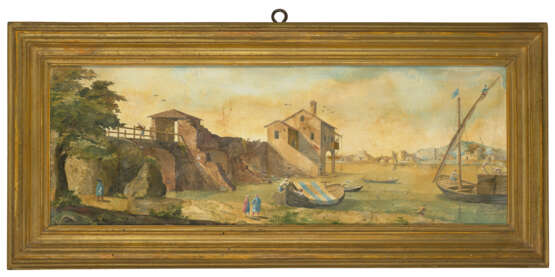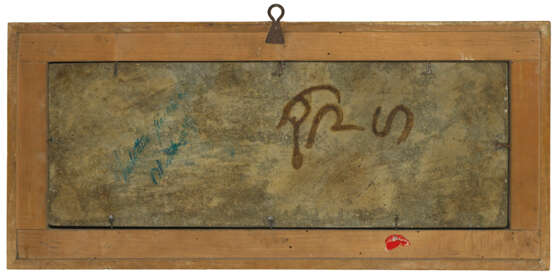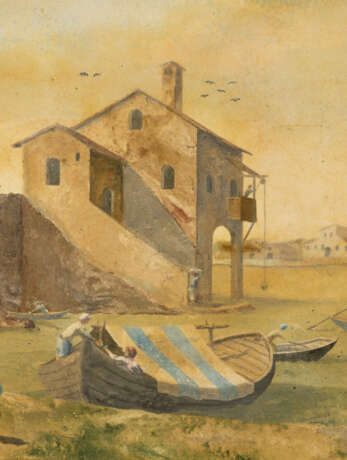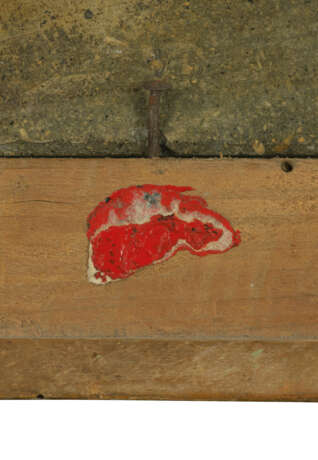ID 1071559
Lot 27 | PAIRE DE PLAQUES REPRÉSENTANT DES PORTS
Valeur estimée
€ 30 000 – 50 000
ENRICO HUGFORD (1695-1771), VALLOMBROSA, VERS 1730-1750
En scagliole sur ardoise, les cadres en bois mouluré et doré postérieurs avec des cachets de cire armoriés fragmentaires et portant des inscriptions au revers
Les plaques 17,5 x 49 cm. (7 x 19 ¼ in.) ; les cadres 26 x 57 cm. (10 ¼ x 22 ½ in.)
Provenance
Collection Azzoni, Sienne.
Literature
Bibliographie comparative
J. Fleming, “The Hugfords of Florence”, in The Connoisseur, CXXXVI, 1955, pp. 106-110, 196.
J. Cook, “Masters of the art of scagliola”, in Country Life, XXIX, 1994, pp. 84-87.
A.M. Massinelli, Scagliola: l'arte della pietra di luna, Rome, 1997, pp. 24-29, 31-36, 49, 141, 213, 250-253, 257-264.
Further Details
A PAIR OF SCAGLIOLA PLAQUES, BY ENRICO HUGFORD (1695-1771), VALLOMBROSA, CIRCA 1730-1750
Enrico Hugford and the art of scagliola
Born to English parents who moved to Italy around 1686 and entered the service of Grand Duke Cosimo III de Medici, Enrico Hugford (1695-1771) and his brother Ignazio (1703-1778) were important figures in mid-18th century Florence. Enrico entered the Abbey of Vallombrosa as a monk in 1711. Trained in the art of scagliola by the monks of the Abbey of Santa Reparata in Marradi, he returned to Vallombrosa, where his talent was soon appreciated and recognised.
Enrico Hugford played a fundamental innovative role in the art of scagliola; his refined technique allowed him to achieve a much greater precision than his predecessors. He treated a wide range of subjects, including landscapes, sea and river views with architecture and figures, flowers, animals, genre scenes, portraits and the stories of saints (see the collection of the Vallombrosa Abbey Museum).
His elegant views draw on the repertoire of 18th century Vedutism, to which he had access through the graphic works kept in the library of the Vallombrosa monastery and among the drawings and paintings collected and sold by his brother. It is well known that his brother Ignazio, a passionate collector, dealer, restorer and eminent figure in Florence, succeeded in promoting and distributing Enrico's scagliola, particularly in the Tuscan capital. The spread of his work was also made possible by the visit to the monastery of Vallombrosa of Englishmen and, more generally, of Europeans passing through on their Grand Tour.
Immediately after his death in 1771, Hugford's works became sought-after collectors' items: one of his sea views was offered to Pope Clement XIV by Monsignor Cesare Massa Salazzo of Tortona and placed in the Vatican Museums. The Grand Duke of Tuscany, Pietro Leopoldo, also bought four landscapes for the Uffizi Gallery in 1779, through the intermediary of the director at the time, Giuseppe Pelli Bencivenni, from the heirs of his brother Ignazio.
An aristocratic Sienese provenance
On the back of the panels are two fragmentary red wax seals which, when reconstructed, reveal the coat of arms of the Azzoni family of Siena.
The ancestors of this illustrious family were Azzone di Tocchi and Pietro di Ghino, who gave rise to the Ghinazzoni branch. The presence of the Azzonis in Monticiano, a town in the Sienese territory, is attested as early as the 14th century, when they developed a profitable iron extraction and ironworks business there. In 1380, they financed the construction of the façade of the Augustinian convent church in Monticiano and lived in a palace in the town's main square. Over the following centuries, their wealth enabled them to increase their holdings and invest in Siena, where they also owned several palaces. Some of the most important members of the family were bankers and Palio judges, the most famous being Saint Teresa Margherita of the Sacred Heart of Jesus, Teresa Margherita Redi (granddaughter of Anna Maria Azzoni (1681-1740)) and the theologian Giuseppe Azzoni (c. 1707-1790).
We would like to thank Dr Anna Maria Massinelli for her research, which enabled the writing of this note.
| Adresse de l'enchère |
CHRISTIE'S 9 Avenue Matignon 75008 Paris France | ||||||||||||||
|---|---|---|---|---|---|---|---|---|---|---|---|---|---|---|---|
| Aperçu |
| ||||||||||||||
| Téléphone | +33 (0)1 40 76 85 85 | ||||||||||||||
| Fax | +33 (0)1 40 76 85 86 | ||||||||||||||
| Conditions d'utilisation | Conditions d'utilisation | ||||||||||||||
| transport |
Service postal Service de messagerie ramassage par vous-même | ||||||||||||||
| Modes de paiement |
Virement bancaire | ||||||||||||||
| Heures d'ouverture | Heures d'ouverture
|
